Future of Work
June 2024 | www.futureofbusinessandtech.com
“Companies can’t treat security as an afterthought anymore.”
Envoy
Page 03
An independent supplement by Mediaplanet to USA Today
“We want to be that strategic partner offering an obesity-first approach to prevent, manage, and treat metabolic disease.”
Dr. Amy Meister, Chief Medical Officer, WeightWatchers
Page 09
Why Investing in Safety and Environmental Sustainability Is Good for Business
Empowered by the internet, society now expects companies to also keep their employees safe at work, limit their environmental impacts, and design more efficient products and operations that reduce waste.
Just a few decades ago, companies were expected to make a profit, abide by legal obligations, and pay taxes. In today’s world, expectations for companies are dramatically expanding beyond that paradigm.
Today’s industry leaders are rising to this challenge. Companies need to understand that they must not only create a profit for shareholders, but also contribute positive value to society.
Creating a strong safety culture lowers the overall risk profile for the company, leading to a reduction in lost productivity, regulatory fines, and workers’ compensation claims. And when employees know their company is doing its best to keep them safe and healthy, they tend to be more engaged, more productive, and more committed to the business’s success.
So, whether this shift in business is being driven by consumers, business customers, or Wall Street, society expects companies to take ownership — and to show us exactly what they are doing to reduce their environmental footprint, ensure employees come home safe from work, and help to protect our planet for future generations.
Written by Carol Singer Neuvelt, Executive Director, National Association for EHS & Sustainability Management (NAEM)
Robert Herjavec on Digital Transformation and Remote Workforces
We spoke with Robert Herjavec, founder and CEO of the Herjavec Group and investor on ABC’s “Shark Tank,” about how businesses should navigate digital transformation and cybersecurity as offices adapt to more flexible workplaces.
Where do you see the future of digital headed?
There is no doubt that any organization that wants to scale needs to go through some aspect of digital transformation. Consumer behavior is dictating that organizations need to make engagement more convenient and simpler than ever before. As a result, companies are developing mobile applications and integrating various consumer touchpoints through the buying process. Those touchpoints lead to opportunities to collect data, to conversion, to privacy concerns … you see where I’m going. This is more risk and more data that needs protecting. We’re also seeing enterprises move to more cloud-based tools in order to drive efficiency and security in business operations.
What should businesses specifically look for in their software partners from a cybersecurity perspective to ensure success?
Businesses need to know what their vulnerabilities are at any given point — this does not limit them to vulnerabilities in their own

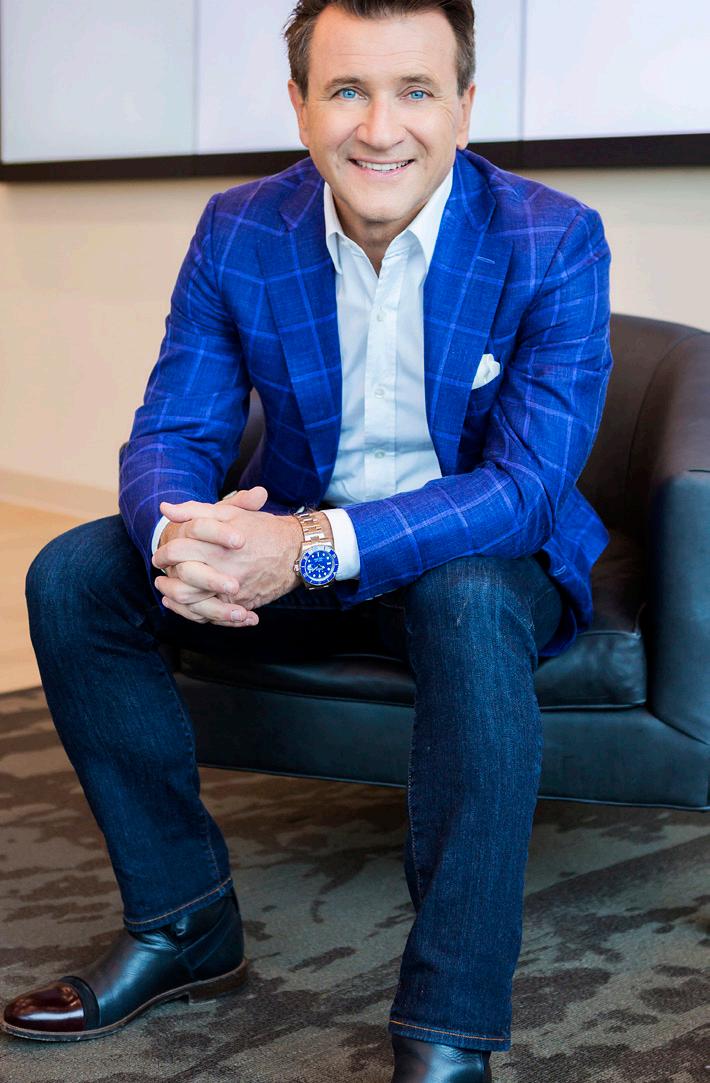
network, but also the vulnerabilities in their partners’ networks.
Many adversaries use third parties to target specific organizations — your cybersecurity measures could be great, but if your partners’ security measures are not, then adversaries can (and will) use them as a gateway into your networks.
You can’t trust that every technology or service provider accessing your network is as secure as you want them or need them to be. You’ve got to establish a baseline for third-party risk in your organization and undergo regular assessments. Vendors should be put through the test in terms of completing appropriate questionnaires on their own policies and procedures, relative to the data they’re accessing in your organization.
At the end of the day, it’s one thing for an organization to be compliant and have security certifications and processes in place, but it is another to implement them. Businesses in general need to conduct third-party risk assessments on at least an annual basis. Think about it — when was the last time you did one?
02 MEDIAPLANET READ MORE AT FUTUREOFBUSINESSANDTECH.COM @futureofbusinessandtech Contact information: US.editorial@mediaplanet.com @MediaplanetUSA Please recycle
Shannon
Managing Director Gretchen Pancak Production Manager Dustin Brennan Creative Director Kylie Armishaw All photos are credited to Getty Images unless otherwise specified. This section was created by Mediaplanet and did not involve USA Today.
Publisher
Ruggiero
INTERVIEW WITH Robert Herjavec Founder and CEO, Herjavec Group
Photo courtesy of Lesley Bryce Photography
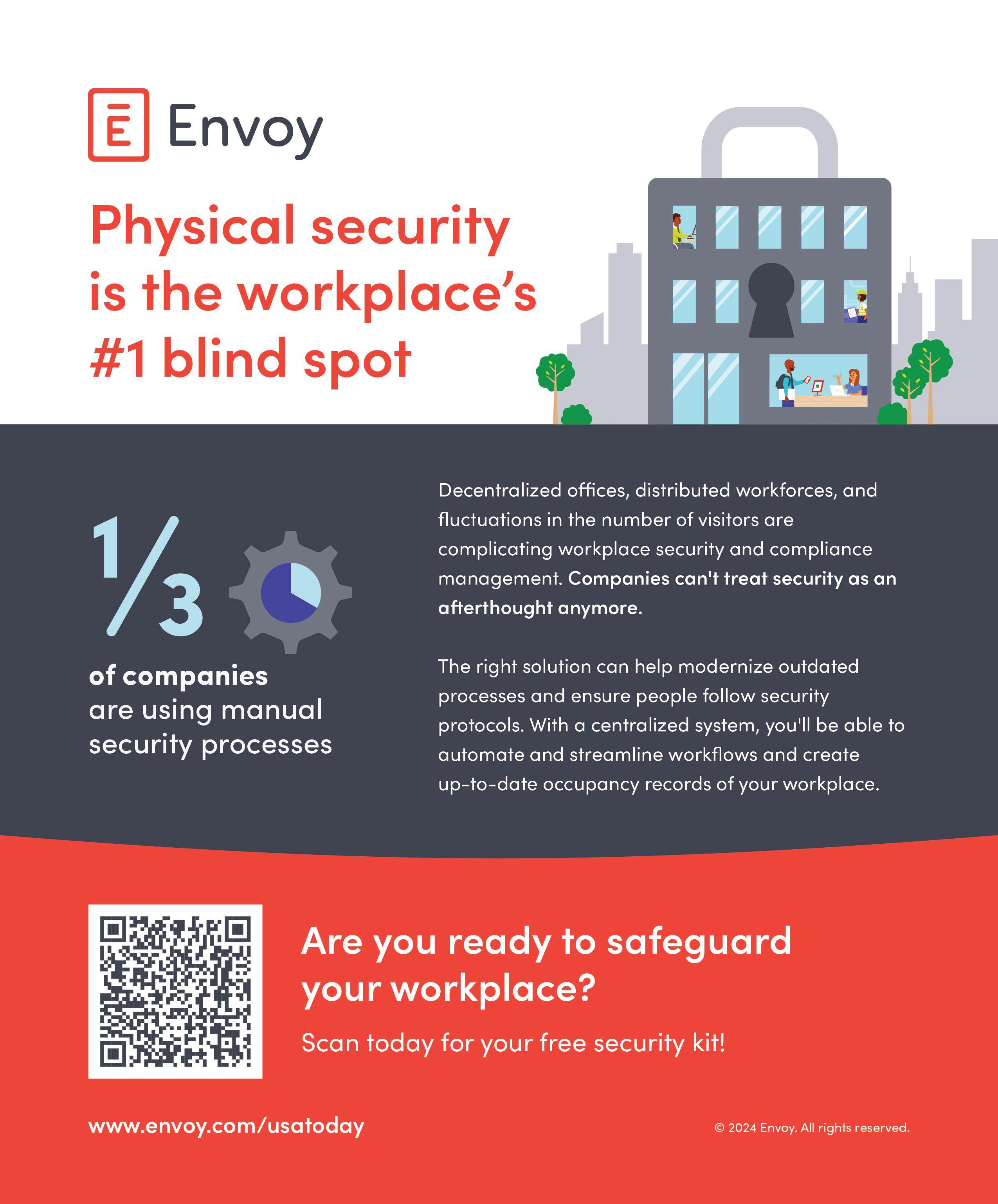
The Keys to Creating a Better Employee Experience in the Workplace
As the CEO of global analytics and advice firm Gallup, Jon Clifton aims to help billions of workers around the world let their voices be heard. He shared his insights on the state of the modern workplace and what employers can do to meet the needs of today’s workforce.
Why is employee experience so important right now?
Poor mental health in the United States has reached a concerning level, and the workplace may be part of the problem. Compared to 1994, Americans are 20% more likely to report experiencing significant daily stress, and self-assessments of mental health have reached new lows.
Life at work greatly influences overall well-being, especially since the average person spends between 83,000 and 115,000 hours working — the equivalent of nine to 13 years of their life. Currently, 40% of American workers believe work negatively impacts their mental health.
What can leaders do to improve the experience of their employees?
The biggest difference between a high-burnout organization and low-burnout organization often comes down to how well the place is managed. Employees at well-run organizations not only experience lower levels of stress and burnout, but also less anger and loneliness than workers at other organizations.
The key to a well-run organization is finding, training, and retaining great managers. One of Gallup’s most significant findings is that 70% of the variance in team engagement is attributable to the quality of the manager. Great management leads to engaged colleagues and teams, resulting in far less stress, anger, sadness, and worry.
How can companies better support managers in a way that allows them to impact employee experience and engagement?
This is an excellent question. People often become managers due to their expertise in a specific area: sales, teaching, engineering, for example. However, expertise in one’s craft does not equate to proficiency in management.
Managers need training on how to have meaningful, two-way weekly conversations with each team member about performance, workload, and employee needs. This is what makes the difference.
Sponsored
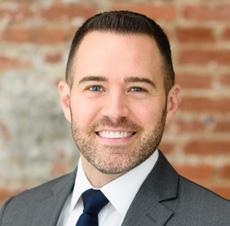
Why Well-Being is the Heart of a Healthy Workplace Culture
We know that employees who work for organizations with a healthy culture are generally happier, more engaged, and feel supported by their employer — both in work and in life. We also know that a positive workplace culture directly impacts productivity and retention.
There are many levers organizations can use to create a healthy company culture. Leadership plays a huge role. But the degree to which the organization values and supports its employees’ holistic well-being is also critical.
When employees feel better across multiple dimensions of their lives — socially, physically, financially, emotionally, and clinically — they have the tools to thrive and make positive contributions to the workplace.
That said, our data shows that only 32% of respondents
strongly agree that their employers care about their well-being. Ouch.
How do you build a healthy workplace culture?
Here are seven key elements to consider when creating your company culture — with well-being at the center:
1. Listen to what employees want and need (and then take action).
2. Make employees’ mental health a priority.
3. Offer flexibility in how, when, and where people work.
4. Role-model healthy behaviors.
5. Embrace employees’ lives outside of work.
6. Offer numerous ways for employees to increase daily physical activity (our team loves walking meetings).
7. Enlist the support of well-being culture champions
Remember, a healthy company culture doesn’t happen overnight. It takes considerable thought, planning, and time to combine all the elements.
But when employees become healthier, greater engagement at work typically follows — leading to increased productivity and better business results.


04 MEDIAPLANET READ MORE AT FUTUREOFBUSINESSANDTECH.COM
WRITTEN BY Christine Muldoon Senior Vice President, Marketing and Strategy, WebMD Health Services
To learn more, visit webmdhealthservices.com
INTERVIEW WITH Jon Clifton CEO, Gallup
3 Tips for Improving Employee Well-Being in the Workplace
Research has shown that stress is a risk factor for a number of issues in the workplace, with 2 in 3 employees naming work as a significant source of stress in their lives. Building resiliency, or how people manage and recover from difficult situations, is a crucial skill for managers who want to improve mental well-being in the workplace, increase productivity, and maintain employee engagement.
To drive employee satisfaction and succeed, employers and businesses need to prioritize the employee experience in a meaningful way, creating a culture that embraces the well-being of all employees. When employees feel that their employers care about their overall well-being, they are three times more likely to be engaged at work.
As a leader, business owner, human resource professional, or people manager, you can use these tips as a starting point to help build a more resilient workforce:
1. Normalize the conversation around mental health Foster a work environment where
employees feel comfortable openly discussing their challenges and needs. As a leader, you can encourage honest conversations about mental health and help break down stigmas by sharing your own experiences, if you feel comfortable doing so. You can also share your self-care strategies and how you relieve stress, such as by exercise and meditation, prioritizing adequate sleep, or journaling.
2. Remove stigmatizing words and phrases from your vocabulary Mental Health First Aid describes stigma as negative attitudes (prejudices) that result in negative behaviors (discrimination). Language is powerful, and your choice of words can either break down misconceptions
and stereotypes or feed into them. Using person-first language, such as “person living with depression” instead of “depressed,” leads to more inclusive discussions about mental well-being at work.
3. Integrate mental health training and awareness into the workplace
By investing in skills-based mental health training for your workforce, you can help increase employee productivity, morale, and retention by cultivating a supportive team culture. You’ll also equip employees at all levels with the skills to recognize and respond appropriately to a colleague who may be experiencing a mental health or substance use challenge in the workplace.
 Sponsored
Sponsored
A Conversation With Roy Castro: A STRIVE Success Story
For systemically marginalized populations, the societal barriers to a life-sustaining career can appear insurmountable. STRIVE, a workforce development nonprofit founded in East Harlem, New York, empowers individuals who are facing these barriers by providing equitable access to the training and support needed to gain quality employment and economic mobility.
Roy Castro, CEO of Castro Ventures, is the co-chair of STRIVE’s board and is himself a STRIVE graduate. He shared how STRIVE helped him change the course of his life more than 20 years ago after a decade in prison:
What brought you to STRIVE?
When I was in federal prison, I noticed the guys who were in for white collar crime were always following the stock market on the cable news. I didn’t understand the stock market ticker display that was being shown, but I did figure out that they were somehow making money as they sat in prison,
so I paid attention and learned everything I could about stocks. When I was released, I was intent on getting a job in the stock market, but I was informed that a person with a felony was not able to be employed there. That’s when my friend’s mother told me about STRIVE and made me promise to go so I could get ready for the workforce.
How does STRIVE’s evidencebased pathway model work?
Over the years, STRIVE has developed a five-pillar model for success that includes career-readiness training, job-skills training, career coaching, job placement assistance, and
lifetime support for grads. Services like referrals for secure housing, food, healthcare, and financial assistance help grads get stable in their lives so they can hold down that first job.
STRIVE also partners with local employers to ensure graduates walk away certified for jobs in top growing industries, like healthcare, construction, and logistics. This provides a pipeline of prepared talent ready to fuel the local economy.
Eighty percent of STRIVE students graduate from the program, 76% get placed in a job, and 70% retain their employment. STRIVE works! It’s a winning investment for everyone, and it changes lives.


05 MEDIAPLANET READ MORE AT FUTUREOFBUSINESSANDTECH.COM
INTERVIEW WITH Roy Castro CEO, Castro Ventures; Co-Chair, STRIVE
To
visit strive.org
learn more,
INTERVIEW WITH
Tramaine EL-Amin Vice President, Mental Health First Aid USA, National Council for Mental Wellbeing
Providing the Right WorkTech Tools for Today’s Employees
Stacy Greiner, CEO of Daily Pay, a WorkTech company and leading provider of earned wage access, shared her insights on the emergence of WorkTech and why employers should prioritize benefits that ensure the financial wellness of their employees.

How Leaders Can Bring Back Civility in the Workplace
Executive Officer, DailyPay
Why is the future of work focused on employee experience, engagement, and well-being?
The needs and expectations of today’s workforce have changed dramatically in the last decade. In the past, traditional HR Tech supported the HR function and processes at work, but today’s workforce requires more. We see this new, evolved space as WorkTech — as opposed to HR Tech — and it goes well beyond HR processes to truly support the day-to-day needs of the workforce.
What are some steps employers can take to improve the well-being of their employees?
Today, employers should be fully embracing ways to bring out the best in their employees to make it easier to be great at their jobs. Emerging WorkTech tools, such as earned wage access, empower employees to be their best at both work and home.
With earned wage access, for example, about 7 of 10 DailyPay users who previously paid late fees do this less often or stopped completely. This enables them to avoid expensive options like payday loans to make ends meet.
To learn more, visit dailypay.com

Close your eyes for a minute. Visualize the headlines of the day: a war here, a school shooting there. A new tragedy fills the front pages every morning.
It’s not easy being alive in the 21st century, in a world where there are so many demands and expectations, both real and perceived. With our ability to communicate globally, we have more information at our fingertips than ever before. And because we know more, we have more — and stronger — opinions. More things to disagree on. More expectations to live up to. People are dividing into polarized camps on global issues. Issues that a few generations ago, many of us never knew much about.
We’re more diverse than we’ve ever been, and yet, we’re also more divided. And somewhere along the way, we’ve let our divisions define us, forgetting how to disagree well and losing the art of civility.
The data is telling: SHRM’s Civility Index revealed U.S. workers experience or witness more than 171 million acts of incivility per day in their everyday lives, more than 67 million of those in the workplace. With stress levels high and busyness displayed like badges on our chests, we come to work each day weary, worn out, exhausted. Passionate, yet at the end of our ropes; tired from fighting every battle and being continuously over-stimulated and inundated with information. Also tired from the constant pressure to make a difference, to always be right, determined to defend our positions on the hot issue of the day, even if it means tearing down those around us. Because, after all, we’re on the side of social justice, right?
Creating better workplaces
So, where does that leave us? In essence, workplaces are their own micro-societies. As leaders, we set the tone. We define the culture. And our cultures can be a solace from the chaotic world around us — a force for good in the battle for mental health — or they can add to the burdensome weight already on our employees’ shoulders.
At SHRM, we’ve launched a campaign to inspire 1 million civil conversations. Despite our differences — and yes, even in an election year — we firmly believe it is possible to share our diverse opinions in a civil manner. It is possible to engage those with opposing viewpoints and, rather than leaving the conversation with hostility, walk away with a sense of learning something new, of a deeper understanding and perspective. And to use this perspective to make us better, stronger. We must learn to disagree better.
As leaders, we have a choice to make. Do we create cultures that continue to spread chaos and division? Or do we choose to spread civility and a desire for deeper understanding of one another?
The choice is simple. The ramifications obvious. The only question is: Will you join us?

06 MEDIAPLANET READ MORE AT FUTUREOFBUSINESSANDTECH.COM
INTERVIEW WITH Stacy Greiner Chief
WRITTEN BY
Sponsored
Johnny C. Taylor, Jr. CEO, Society for Human Resource Management (SHRM)
Elevating Your Employee Experience to Match Your Customer Experience
Organizations have long focused on customer journey mapping to enhance customer experience (CX), which leads to substantial returns for shareholders. However, the equally important employee experience is often overlooked.
Just as a stellar CX positively impacts the bottom line, an exceptional employee experience yields similar benefits. Studies show that motivated employees contribute to higher customer satisfaction, with highly engaged teams demonstrating 21% greater profitability.
When employees have a great experience, this also equates to high employee engagement scores. According to Gallup, organizations that prioritize employee engagement see 23% greater profitability, 18% increased productivity, and a significant 48% reduction in turnover. Engaged employees bring passion, presence, and energy to their work daily.
The key question then becomes: How can organizations elevate employee engagement and cultivate an outstanding employee experience? The solution begins with an understanding of the employee journey.
What is the employee journey?
The employee journey encompasses hiring, onboarding, promotions, life events, and eventually departure. Each stage impacts the overall employee experience and engagement. Companies should map the employee journey as meticulously as they map the customer journey, identifying key touchpoints and milestones.

Getting started with employee journey mapping
An employee journey map combines these moments into a visual representation and actionable framework tailored to your industry, enterprise, employees, and culture. It highlights the critical stages, key milestones, and necessary touchpoints for each stage.
The process begins by identifying key stakeholders involved at various touchpoints, including IT, HR, communications, and managers. Stakeholders collaborate to map out key touchpoints in the employee journey. This involves:
• Identifying employee personas based on department, role, preferences, and technology usage.
• Prioritizing significant moments like onboarding, performance reviews, and life events.
• Addressing critical gaps in retention, burnout, or cultural disconnects.
• Developing communications for each touchpoint that are personalized yet scalable.
Start your journey with Firstup
Traditional digital experiences, such as sending mass emails on benefits or training programs, fall short — particularly when it comes to the deskless workforce who may not have access to emails. Furthermore, even if the employee does have access to email, they still may not read the message. Consider this: A mind-boggling 347
billion emails are sent daily. How do you cut through the noise and capture your employees’ attention?
The answer lies in embracing personalized communication throughout the employee journey, akin to the individualized experiences we encounter as customers.
Think about the convenience of receiving notifications from Alexa about a delivered package or a reminder about your child’s birthday list. Now imagine implementing the same level of personalization with your internal communications — for instance, when an employee embarks on parental leave. This ensures they receive precisely timed, relevant information on actions like adding a dependent to their insurance, completing leave forms, and taking advantage of your organization’s parental benefits. The employee now experiences a sense of support during this significant moment in their life.
Prioritizing employee engagement and mapping the employee journey can lead to increased profitability, higher productivity, and reduced turnover. Utilizing intelligent communication platforms like Firstup allows companies to personalize the employee experience, fostering a more engaged and productive workforce.
By treating employees with the same care and attention given to customers, organizations can create a supportive and effective work environment.


07 MEDIAPLANET READ MORE AT FUTUREOFBUSINESSANDTECH.COM Sponsored
Learn more about employee journey mapping by downloading the Firstup guide.
Dr. Brittany Barhite Head of Employee Experience, Firstup
GLP-1s for Weight Loss: What Payers Need to Know
Here’s how employers and health plans are improving health while managing spend for metabolic health conditions.
As obesity and related healthcare costs escalate, organizations need a sustainable strategy to contain costs while improving metabolic health conditions. These are some of the key components to an effective strategy for GLP-1s and other weight-loss medications:
Superior, expert behavioral support that goes beyond diet and exercise to support long-term lifestyle changes that improve sleep, reduce stress, and help people overcome emotional health obstacles.
Tailored medication and care from a diverse team of clinical obesity specialists who use a stepwise approach to weight loss utilizing the full range of medications, not just GLP-1s, to optimize costs and deliver a more personalized experience.
A proven partner that seamlessly integrates with an organization’s benefits ecosystem and offers comprehensive programming to engage and retain employees, and deliver measurable health and financial outcomes with no upfront costs.
Join over 2,000 employers and health plans who offer Wondr Health’s full-spectrum weight and obesity-management program that combines world-class behavioral support with personalized medicine for optimal health and lower costs.
Scan the QR code to learn more:
 WRITTEN BY Tim Church, M.D., M.P.H., Ph.D. Chief Medical Officer, Wondr Health
WRITTEN BY Tim Church, M.D., M.P.H., Ph.D. Chief Medical Officer, Wondr Health
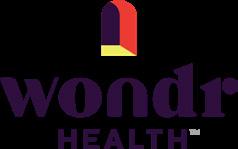

Confronting Weight Bias and Discrimination in the Workplace
Weight-based harassment and discrimination are real — and getting worse. Listening to employees is a good start to addressing it.
More than 40% of U.S. adults report experiencing weight-related stigma at some point in their lives. In the workplace, this can take the form of teasing, taunting, and microaggressions. Research has found that as obesity rates have risen in the United States, so too has weight discrimination.
With nearly 1 in 3 U.S. adults classified as overweight, and more than 2 in 5 meeting the clinical definition of obesity, it follows that a significant number of people in today’s workforce are likely to face weightbased workplace discrimination, potentially harming their job opportunities and career advancement.
According to recent Society for Human Resource Management (SHRM) research on the state of weight discrimination in the workplace, 72% of U.S. employees who have experienced unfair treatment at work due to their weight say it has made them feel like quitting their jobs, and 11% of HR professionals say an applicant’s weight has played a role in decisions their organizations have made during the job application process.
Addressing healthcare and weight bias “You see weight discrimination in hiring and in determinations of promotions and salary,” said Patricia Nece, a retired federal employee who served as the chairperson of the board of directors with the Obesity Action Coalition, a nonprofit based in
Tampa, Florida, that actively fights weight bias, stigma, and discrimination.
“There’s also a third area: the healthcare that is offered to people who want to do something about their weight through employee health plans,” Nece said. “It’s not the same as anyone with another type of disease.”
Nece encourages business leaders to review their health insurance policies to ensure they’re providing options for employees who wish to address their weight. She says healthcare plans should include anti-obesity medications, which employers have been increasingly considering in recent months. Nece also says these plans should include intensive behavioral therapy and nutritional counseling.
Employers that proactively address weight-based discrimination in the workplace and adopt a no-tolerance policy toward it can make it easier for their employees of all sizes to take advantage of development opportunities and succeed in their careers, uninhibited by the fallout of harassment and discrimination.
Employee education is a good place to begin. According to Nece, who has been obese since childhood, “Most people have no idea about the many challenges larger-bodied people face in every phase of our lives.” Shining a light on that is a solid start.
Written By Matt Gonzales, Society for Human Resource Management (SHRM)
08 MEDIAPLANET READ MORE AT FUTUREOFBUSINESSANDTECH.COM
Sponsored
Unlock the Secret to Employee Weight Health
WeightWatchers for Business combines behavioral change with clinical intervention to support employees wherever their weight health journey takes them.
Employee health problems cost U.S. companies more than $225 billion annually, and obesity is a key driver of absenteeism and related costs. The key to success is a full-spectrum health solution that can evolve and change along with your employees’ weight health needs.
“The healthcare ecosystem as a whole is challenging to navigate,” said Amy Meister, D.O., M.R.O., chief medical officer at WeightWatchers. “What we’ve tried to do is simplify that experience — we want to be that strategic partner offering an obesity-first approach to prevent, manage, and treat metabolic disease.”
Full-spectrum
For employers and health plans, that strategic partner is WeightWatchers for Business, which combines WeightWatchers’ proven behavioral change program with a virtual obesity clinical program called WeightWatchers Clinic.
The key benefit is flexibility. “As your body and health changes over time, your needs change,” Dr. Meister noted. “Our best-in-class weight health program is tailored to the individual, and also to the organization’s benefit coverage decisions.”
The full-spectrum approach includes the ability to meet with a full care team comprising obesity-trained clinicians, registered dieticians, and fitness specialists, and access to weight-loss medications like GLP-1 agonists, including Wegovy, if appropriate. Combining the WeightWatchers behavioral program with these medications has been shown to help participants lose 11% more weight than with medication alone.
Optimal success with medications requires a nutrient-dense diet, and strength and resistance training to counter loss of muscle mass, demonstrating the need for a “full-spectrum” approach like WeightWatchers for Business and specifically its GLP-1 behavior change companion program.
Long-standing client Labcorp recently announced that it is deepening its existing partnership with WeightWatchers for Business to offer the full-spectrum weight health platform available at no cost to Labcorp’s U.S. employees covered under its benefits plan. “Implementing this comprehensive program reflects Labcorp’s commitment to its employees to ensure they have the holistic support they need to achieve sustained health outcomes,” Meister said.
Beyond the scale
In the past, it was common to think of weight as an isolated aspect of our existence — a number on the scale that had to be reduced. But the connection between an unhealthy weight and a range of chronic conditions, like diabetes, is clear.
“As a clinician, I don’t only treat someone’s diabetes,” Dr. Meister explained. “I don’t only treat their blood pressure. These are just a few examples of the over 200 chronic conditions that are impacted by obesity; many of which respond positively to the behavior and lifestyle changes in our program.”
As diabetes reaches epidemic proportions — it’s the fastest growing chronic disease in the world — WeightWatchers continues to innovate, offering a CDC-accredited Diabetes Program and partnering with medical device maker Abbott to help its members track data from their continuous glucose

monitors, allowing them to see how their lifestyle and behavioral choices affect their glycemic control.
“It puts people living with diabetes in the driver’s seat,” Meister added. “It’s a great example of how not to fragment care — it doesn’t matter what weight-related chronic condition you have, we can service it.”
That’s crucial for employers because they won’t need to buy separate solutions for their employees’ weight health needs, including other aspects of life impacted by overweight and obesity. Studies have demonstrated that weight loss can boost overall well-being, quality of life, and self-esteem while also boosting work performance.
Those benefits drive WeightWatchers to partner with institutions like the Cleveland Clinic, Stanford, Cambridge, and Johns Hopkins on clinical research to help them validate and evolve their programs.
The personal why Meister advises that employers must remember that each of their employees is an individual with individual needs. “Anybody who embarks upon their personal journey in weight health has to understand their ‘personal why,’” she said. “And our ‘why’ at WeightWatchers for Business is supporting organizations in providing access to quality weight health care.
Written by Jeff Somers


09 MEDIAPLANET READ MORE AT FUTUREOFBUSINESSANDTECH.COM
Sponsored
learn more, visit weight watchers.com/ forbusiness
To
INTERVIEW WITH Amy Meister, D.O., M.R.O. Chief Medical Officer, WeightWatchers
Building a Better, Safer Employee Experience for Today’s Workforce
Our panel of experts weighed in on what highly successful employers are doing to keep their workers healthy, safe, and engaged.





Why is the future of work focused on employee experience, engagement, and well-being?
Brittany Barhite: Employee expectations have shifted. Workers today, especially the younger generations, put emphasis on having a sense of belonging and being valued for their contributions. Their expectation of work communication is similar to how they communicate in their personal and consumer worlds (concise, engaging, and tailored to them).
Employees want the same amazing experience they get when ordering from Amazon and other companies: a personalized, omni-channel campaign designed to reach them on their preferred channel with the information they need right at that moment.
Tiffany Stevenson: We are witnessing first-hand a major shift in the workplace that puts an emphasis on holistic employee well-being. As a result, employers are focused on investing in their employees’ health and creating a “culture of health” that prioritizes whole-person well-being and inclusivity. We’ve seen this yield long-term benefits that are mutually advantageous for employees and the organization, including increased productivity and quality of life, and optimized health.
Why is company culture so important for employee well-being?
Arianna Huffington: It’s important because we now know an enormous amount about how stress and burnout affect us, both at home and at work. The science is clear that when we prioritize our well-being, we’re more creative, productive, and resilient, and we make better decisions.
Well-being isn’t just a perk, it’s a competitive advantage. And there’s a direct connection between the health of a company’s bottom line, and the health and well-being of every company’s most important resource: its people. So, in the same way well-being boosts our immune system, culture serves as a company’s immune system, giving it the resilience to meet inevitable challenges.
What is changing in employers’ approaches to managing employee health?
Karen Moseley: Attitudes about healthcare are shifting in the American workplace. As they do, business leaders are starting to realize that their responsibilities extend beyond the walls of their workplace and out to the broader community. While employee health benefits have historically focused on treating sick people, there is fresh attention being paid to how employers can keep people from getting sick in the first place.
What is the main challenge businesses are facing today when it comes to employing a hybrid workforce?
Cormac Twoney: The workplace has undergone a significant transformation in recent years, reshaping the very purpose of workspaces. Leaders across workplace/facilities management, security, and IT are under pressure to understand how their workspaces are being utilized, and equip their teams with the right technology to ensure the security and safety of their employees.
While many organizations are eager to introduce new and advanced technologies to support their evolving workplaces, most still rely on outdated manual processes and legacy systems. This tremendous technology
gap has left leaders unequipped to maintain security and compliance across their workforces.
Adapting to new technologies can help tackle these issues, but brings its own hurdles, including the need for thoughtful planning and careful implementation, with clear communication and collaboration across departments.
How does an intelligent communication platform improve the employee experience?
BB: Intelligent communication platforms like Firstup enable HR and internal communications teams to deliver hyper-personalized messages to every employee — based on employee attributes and behavior — similar to what we see in the consumer world. The platform can tailor communication and information delivery to each individual employee when, where, and how they want to receive it — which in turn boosts engagement, fosters that desired sense of belonging, and helps them feel appreciated and valued.
Are there any initiatives or upcoming trends in employee health and wellness that you personally support?
TS: Employers are at the center of a huge opportunity to improve the health outcomes of their employees by providing a higher quality of weight health care. By eliminating weight bias and stigma from a culture standpoint and investing in programs to make weight health care accessible for all, employers can not only have a positive impact on many stages of someone’s life, but also realize cost-saving benefits by driving meaningful outcomes in preventing, managing, and reversing disease.
10 MEDIAPLANET READ MORE AT FUTUREOFBUSINESSANDTECH.COM
Brittany Barhite Head of Employee Experience, Firstup
Tiffany Stevenson Chief People Officer, WeightWatchers
Arianna Huffington Founder and CEO, Thrive Global
Karen Moseley President and CEO, Health Enhancement Research Organization (HERO)
Cormac Twoney Chief Technology Officer, Envoy
Building a Stronger Workforce Through Literacy
Despite recent improvements in national employment rates, hiring and retaining skilled employees for frontline roles remains a persistent challenge for industries like food and beverage, retail, logistics and transportation, and wholesale distribution.
One significant contributing factor is that more than half of American adults (54%) read below a sixthgrade level and nearly 1 in 5 (about 48 million) read below a third-grade level, limiting their reading comprehension to simple, short sentences.
Low literacy levels make it far more difficult for an individual to get a job, maintain a job, or make family-sustaining wages. For low-literate adults who are employed, the likelihood of career advancement and increased pay is often quashed by their lack of reading, digital, and critical-thinking skills.
In 2023, data from the Bureau of Labor Statistics showed that someone without a high school diploma earned, on average, $708 per week. That’s three times less than the average $2,109 earned by someone with advanced degrees. The inability to earn higher wages means adults with less education are often stuck in generational poverty, with housing, food, and education insecurities. Lack of reliable transportation and childcare can also create barriers to work attendance.
Employers are also feeling the strain of low literacy. The Adult Literacy and Learning Impact Network (ALL IN) recently commissioned a study with FTI Consulting to survey 500 frontline employers across the country. The study overwhelmingly found that most employers recognize that they’ve faced literacy challenges, whether limited or widespread, while hiring or training employees. Onethird of employers said their average employee does not possess enough literacy skills to do their current job well, and 40% said that low literacy is widespread in their company.
Without a fully literate workforce, employers wrestle with low employee

retention rates, lost productivity, and declining revenue. Employers surveyed in the ALL IN study estimate that they will lose $46 billion in revenue over the next year as a direct result of low literacy.
Investing in adult education
Upskilling our workforce strengthens our economy, and investing in adult education is a win-win. Adult education helps build a more qualified workforce and increases earning potential for frontline workers to take home family-sustaining wages. It is estimated that bringing every American adult to at least a sixth-grade reading level would pump $2.2 trillion dollars into the economy.
Adult literacy programs across the nation, many supported by ProLiteracy, improve lives every day by upskilling adults and positioning them to enter or advance in the workforce. Yet we are reaching fewer than 10% of adults in need of literacy support.
Partnerships between employers and adult education programs are one way to reach more adults.
Innovative, employer-funded workplace education programs that provide adults with access to on-site services or digital learning tools and virtual instruction are an easy way to invest in and upskill their workforce.
ProLiteracy is partnering with Guild to help working adults grow personally and professionally through education. Through Guild’s online Career Opportunity Platform, companies like Target, Tyson Foods, Chipotle, and Pitney Bowes are funding employee access to ProLiteracy New Readers Press high school equivalency courses and virtual tutoring.
Employers that invest in educating their employees and closing the skills gap can promote from within, build employee loyalty, and reduce turnover, resulting in improved productivity and revenue.
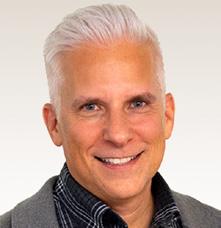
11 MEDIAPLANET READ MORE AT FUTUREOFBUSINESSANDTECH.COM
Sponsored
more about ProLiteracy and access its collection of free workforce resources on its website:
Learn
WRITTEN BY Mark Vineis President and CEO, ProLiteracy
Photo by Supavadee Butradee (via shutterstock.com)
STOP ASKING KIDS what they want to be when they grow up.
START ASKING what makes their hearts sing.
Let’s help all kids discover career paths that bring them happiness and success.
12 MEDIAPLANET READ MORE AT FUTUREOFBUSINESSANDTECH.COM
asa.org/fueltheirfutures







 Sponsored
Sponsored








 WRITTEN BY Tim Church, M.D., M.P.H., Ph.D. Chief Medical Officer, Wondr Health
WRITTEN BY Tim Church, M.D., M.P.H., Ph.D. Chief Medical Officer, Wondr Health










